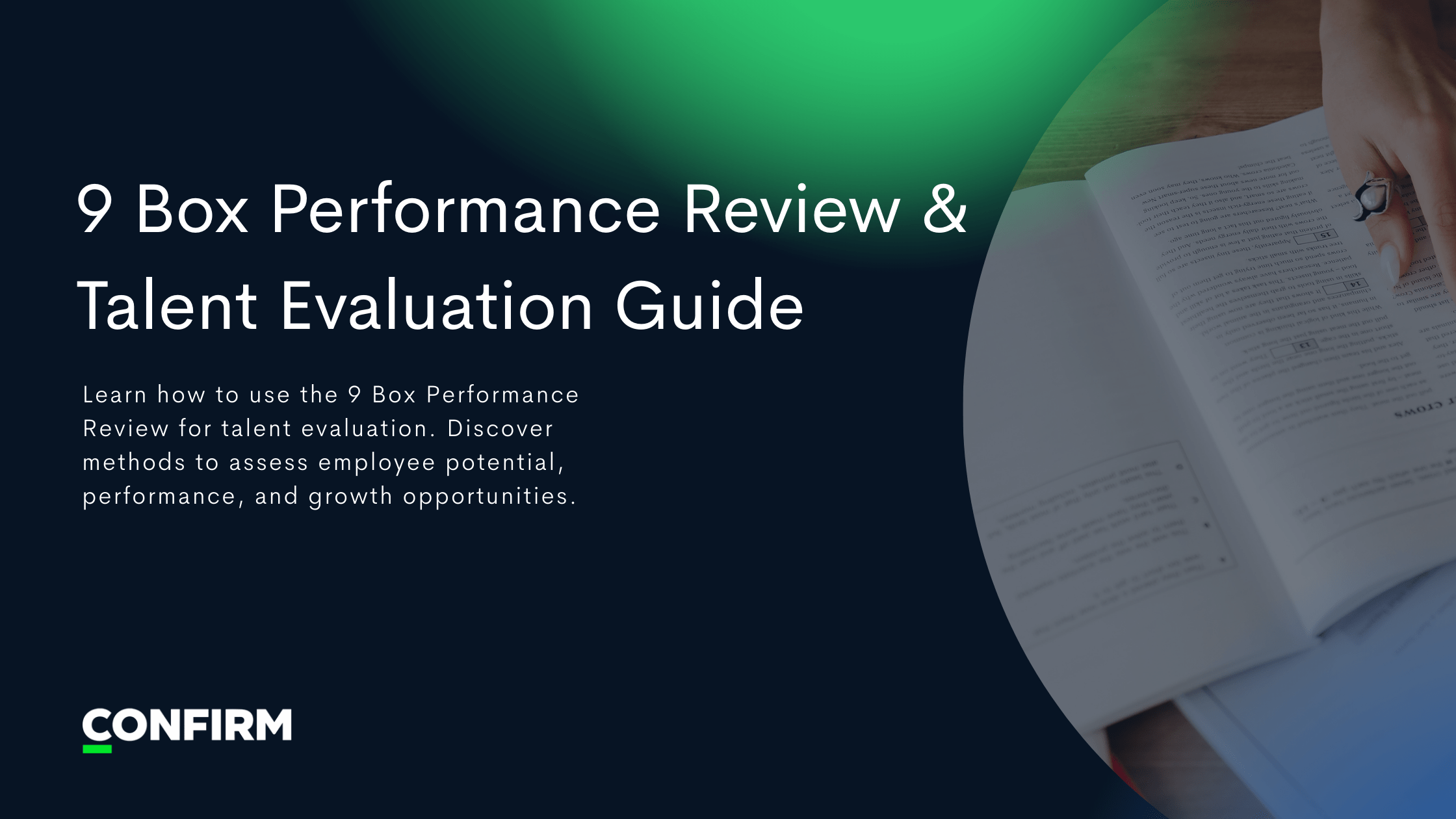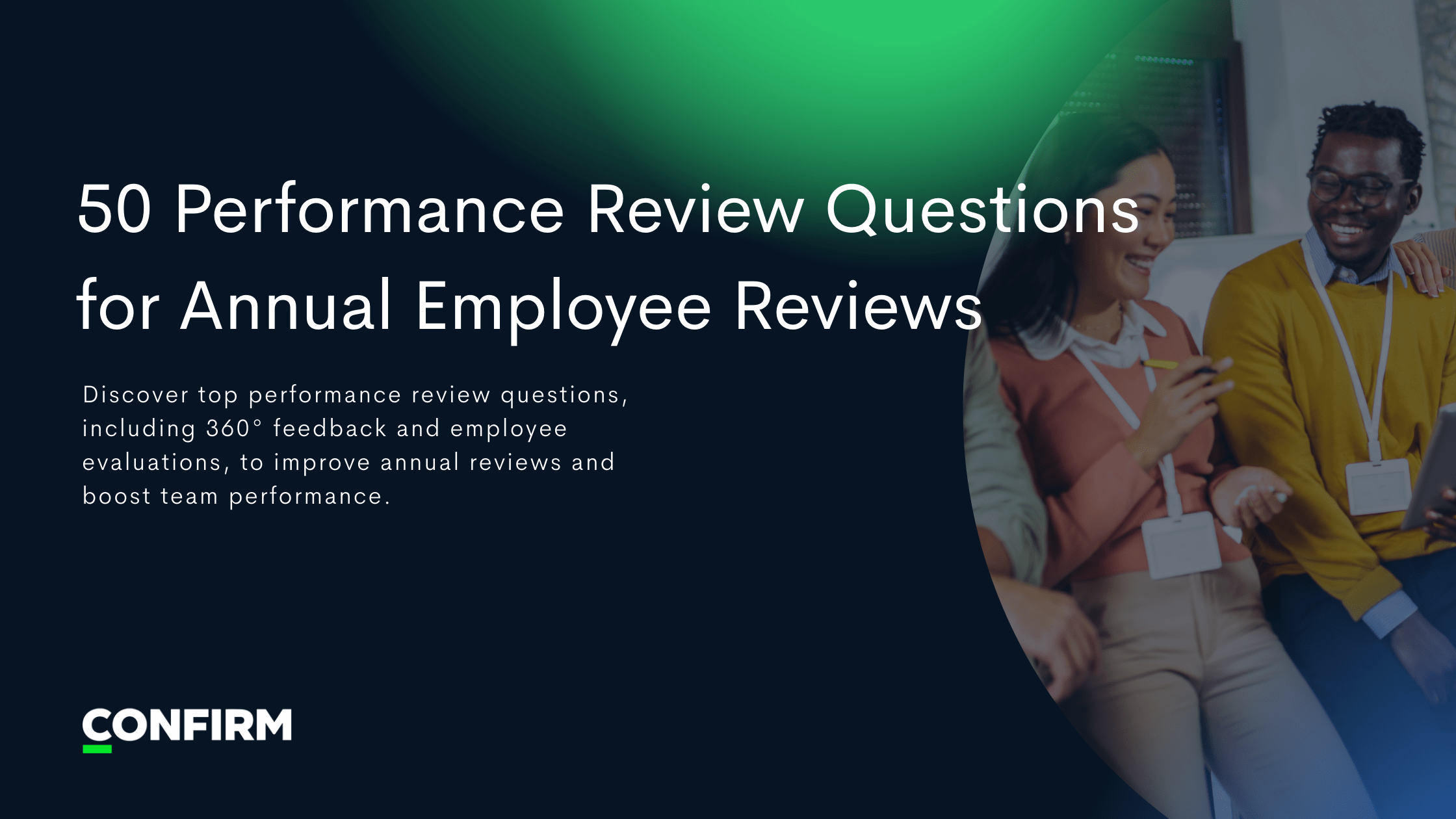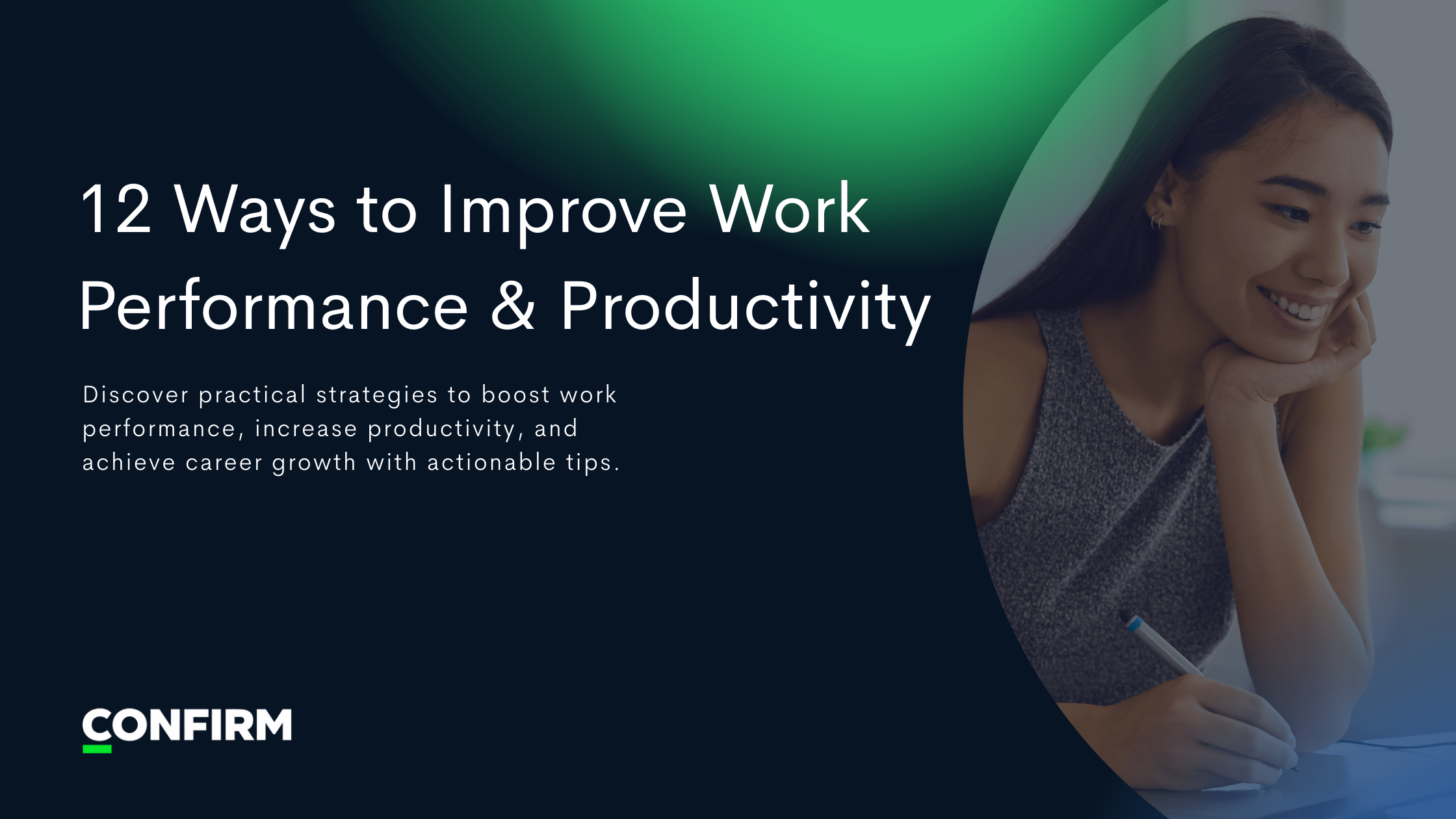
Blog post
Maximizing Talent Retention with ONA Infused Performance Insights
Organizational Network Analysis (ONA) transforms performance assessments and drives retention in today's evolving workforce.

Introduction: Navigating a Volatile Talent Market
In today's competitive business environment, the retention of top performers has become a paramount concern for companies worldwide. One of the most influential tools at a company's disposal to ensure this retention is the performance review process. When executed effectively using performance review examples, employee performance reviews not only gauge an employee's contributions but also identify their aspirations, strengths, and areas for growth.
This understanding fosters a supportive environment where the company's top talent feels valued, understood, and motivated to stay. Additionally, performance appraisals, whether in the form of annual reviews or performance review templates, can facilitate this process, ensuring individual employees have a clear understanding of their job description and work produced.
Why It Matters
Recent findings from McKinsey highlight the urgency of this challenge. Companies are facing a critical shortage of talent and skills. With 90% of companies predicting a significant skills gap in the near future and 40% of employees contemplating a change, the stakes have never been higher. Furthermore, a strong company culture of people development that encourages sharing feedback and providing feedback can significantly improve employee performance and keep employees engaged.
How Should Organizations Respond?
As the dynamics of the workforce evolve, so too must the methodologies of performance reviews. Traditional method of performance ratings and evaluation methods, while foundational, may no longer capture the full spectrum of employee performance and ability. As the demand for leaner operations and more agile teams grows, there's an urgent need for a more nuanced, efficient, and holistic approach to talent assessment, support and development. In contexts like health care or small businesses, the way employees perform and receive feedback can dramatically differ.
The Shortcomings of 360 Performance Reviews
The 360-degree feedback, a popular employee performance review methodology, involves collecting feedback about an employee from various sources, including peers, subordinates, and managers. While this peer review and performance evaluation process provides a multi-faceted view of an employee's performance, it has its limitations:
- Selection Bias: Employees often have a say in selecting their peer reviewers, leading to potential biases as they might choose individuals more likely to share feedback positively, making it difficult to accurately gauge performance.
- Lack of Anonymity: Providing regular feedback without the veil of anonymity means reviewers might withhold constructive criticism or overly emphasize positive aspects. Honest feedback becomes scarce.
- Surface-Level Insights: While 360 reviews capture a broad range of opinions, they might not delve deep into the intricate dynamics of workplace relationships and collaborations, making informal feedback all the more crucial.
360 reviews are also frequently susceptible to recency bias, where employee feedback often can be disproportionately influenced by recent events rather than reflecting performance trends that progress over time. This can result in scenarios where an otherwise stellar performer or team leader who typically works above quality standards may receive an unduly critical performance review due to a recent slip-up as perceived by other employees. This process, while attempting to highlight leadership qualities, often misses out on the better understanding of the nuances of different job roles.
Moreover, these reviews often prioritize soft skills such as teamwork, communication, and problem solving, sometimes overlooking crucial insights into hard skills, technical abilities, and measurable output. Additionally, since participation in 360 reviews is voluntary, some peer reviewers also may not invest the same level of diligence in providing feedback as others.
Given the considerable effort involved in collecting, aligning, and consolidating various perspectives, the 360 review process may not always yield insights commensurate with the quality of the investment. Consequently, there arises a compelling need for more objective, well-rounded, and actionable assessments.
The Superiority of ONA-Enhanced Performance Discussions
Organizational Network Analysis (ONA) offers a transformative solution to these challenges. Here's how ONA stands out:
- Objective Data: Unlike 360 reviews, which rely on subjective opinions, ONA is based on objective data, analyzing actual interactions and collaborations within the company.
- Uncovering Hidden Dynamics: ONA can identify high performers who might not be vocal but play a pivotal role in the organization's success.
- Holistic View: ONA provides a comprehensive view of an employee's performance, going beyond task completion to understand their role in the broader organizational network.
Consider the following scenarios:
- Recognizing the Unseen High-Performers: Through ONA, an organization identifies Emma, an employee who, while not always vocal in meetings, is a central figure in the network. Recognizing Emma's influence can lead to her being placed in roles with a broader impact, thereby amplifying overall productivity and striking the right balance.
- Supporting Those Who Need It: ONA also highlights individuals like Raj, who, despite his best efforts, is somewhat isolated in the network. This could indicate challenges in collaboration or identify areas where he would benefit from new skills and support. By addressing Raj's needs, HR can not only enhance his performance but also prevent the high costs associated with turnover and rehiring.
The "Great Renegotiation" and its Implications on Talent Management
The Great Renegotiation, as coined by McKinsey, underscores the need for organizations to adapt their talent management strategies. Traditional methods, such as compensation incentives, are no longer as effective. The pandemic has led many to reevaluate their career and personal life priorities, leading to a significant pool of workers moving away from traditional roles.
This shift emphasizes the need for innovative, flexible, and holistic approaches, like ONA, to understand and cater to the evolving preferences of the workforce. A core part of these evolving strategies is the emphasis on providing feedback and the importance of constructive feedback. Moreover, it can directly impact these trends in several key ways.
- Identifying Impactful Contributors: Research shows that a small percentage of employees, approximately 15%, create a disproportionate 50% of the impact within an organization. ONA allows organizations to pinpoint these high-performing employees more accurately. By recognizing and nurturing these contributors through enhanced performance assessments that provide regular feedback, organizations can create conditions that encourage them to stay, ultimately mitigating the talent drain characteristic of the Great Renegotiation.
- Reducing Bias: Traditional performance reviews are often marred by bias, where as much as 60% of a manager's rating is influenced by subjective biases rather than actual employee performance, according to research. ONA-driven reviews, guided by data-driven insights and enriched by the practice of providing feedback and receiving feedback, are more likely to yield fair and objective assessments. This reduction in bias fosters an environment where top talent is recognized and retained, countering the bias-driven attrition associated with the Great Renegotiation.
- Performance Differentiation: Traditional performance reviews tend to cluster around the middle of the rating scale, with 90% of employees receiving 3s and 4s. This makes it challenging for companies to distinguish top performers from others. ONA-informed reviews, paired with regular avenues of providing and receiving feedback, offer a more granular understanding of contributions, allowing organizations to differentiate between top and bottom performers more effectively.
- Equity for Quiet Contributors: Traditional reviews tend to favor employees who excel at self-promotion or managing upward. However, there are valuable "quiet contributors" who may not excel in these areas but make significant contributions behind the scenes. ONA can identify and appreciate these individuals, ensuring they receive the constructive feedback, recognition and support they deserve.
- Mitigating Selection Bias: Traditional 360-degree reviews often suffer from selection bias, as employees choose their reviewers, potentially leading to an inaccurate portrayal of performance. ONA-driven reviews offer a more balanced and comprehensive perspective, minimizing selection bias, and providing a more accurate picture of an employee's performance while emphasizing the importance of providing feedback.
By harnessing the power of data-driven insights and addressing the challenges presented by traditional methods, ONA empowers organizations to retain top talent, proactively mitigate problems, improve employee performance and foster a positive work environment.
The Way Forward: Embracing ONA for Talent Retention & Optimization
As the talent landscape continues to evolve, organizations must adapt their strategies to stay ahead. By integrating ONA into performance reviews, companies can ensure they're not just "doing more with less" but are "doing better with the best." This approach promises managers a more nuanced and accurate understanding of employee performance, ensuring that talent reviews are both actionable and aligned with the organization's goals.
The Comprehensive Benefits of Retaining Top Talent
Retaining top talent is not just a matter of organizational pride; it has tangible and intangible benefits that significantly impact an organization's bottom line and overall culture. Here's a breakdown:
Financial and Economic Benefits:
- Reduced Turnover Costs: Every time an employee leaves, there are costs associated with recruiting, hiring, and training a replacement. Retaining top talent means these costs are minimized.
- Increased Productivity: Top talents often have a higher output and bring more value to their roles, directly contributing to the organization's profitability.
- Stable Operational Flow: High retention rates ensure that projects and tasks are not frequently disrupted, leading to consistent operational efficiency.
- Client and Customer Satisfaction: Long-term employees often build strong relationships with clients and customers, ensuring loyalty and repeat business.
- Knowledge Retention: When top talents stay, the valuable knowledge and expertise they possess remain within the organization, preventing a potential knowledge drain.
- Reduced Onboarding Expenses: Fewer new hires mean fewer resources spent on onboarding processes, materials, and training sessions.
"Soft" Benefits:
- Improved Employee Experience: A culture that values and retains its top talent often has a positive and motivating atmosphere, enhancing the overall employee experience.
- Enhanced Company Reputation: High retention rates can bolster an organization's reputation, making it an attractive place for other top performers to work.
- Strengthened Team Dynamics: Long-term employees often have better rapport with their colleagues, leading to improved teamwork and collaboration.
- Increased Employee Engagement: When top talents feel valued and choose to stay, it boosts morale and engagement levels across the organization.
- Cultural Continuity: Retaining key employees ensures that the organizational culture is preserved and passed on to new members, maintaining the company's core values and ethos.
- Mentorship Opportunities: Experienced employees and managers can focus on mentoring and guiding newer members, fostering a culture of growth and learning.
Leveraging Technology for Enhanced Employee Performance
In the era of digital transformation, leveraging technology for assessing and enhancing employee performance is no longer an option but a necessity. Advanced analytics, AI, and machine learning are revolutionizing the way organizations conduct performance reviews and talent optimization. These technologies enable a more in-depth, data-driven insight into employee performance, helping organizations make informed decisions for talent development, performance evaluation and management.
ONA: A Comprehensive Approach to Talent Management
In conclusion, Organizational Network Analysis stands as a robust tool for navigating the complexities of the modern talent landscape and assessing performance further. It goes beyond traditional performance reviews, offering a comprehensive, objective, and data-driven approach to understanding and enhancing employee performance.
By embracing ONA, organizations can ensure they are not only keeping pace with the evolving talent market but are also positioning themselves for sustained success in the future. The integration of ONA into the talent management strategy is a step towards ensuring a motivated, engaged, and high-performing workforce, contributing to the overall growth and success of the organization.
In the face of the ongoing talent crunch, the strategic use of ONA for talent optimization emerges as a beacon of hope for future leaders, guiding organizations towards effective and efficient talent management, ensuring a focus on not just survival but thriving in the tight talent market.
FAQ: Enhancing Performance Reviews with ONA in the Talent Crunch Era
These FAQs can serve as a quick reference for those interested in understanding the key concepts and benefits of integrating ONA into performance reviews, especially given the current talent landscape.
What is ONA, and how does it revolutionize traditional performance appraisals?
Answer:
ONA, or Organizational Network Analysis, is a method that examines relationships and interactions within an organization. This innovative approach moves beyond the traditional method of performance appraisals by providing a better understanding of how employees collaborate and influence. With ONA, performance review examples can be drawn from real-world interactions, offering a clear understanding of an employee's impact within their network.
How does ONA boost talent retention?
Answer:
ONA-driven performance reviews offer a holistic view of an individual's contributions by not just focusing on specific tasks but also their broader roles within the organizational network. This includes recognizing "hidden" talents who serve as key connectors or influencers, ensuring their significant roles are not overlooked. Additionally, using ONA data can make performance evaluations more objective, mitigating biases present in traditional review processes. As a result, top performers are acknowledged for their comprehensive influence and interactions, fostering a sense of value and fairness in assessments.
Why are ONA-driven performance review templates essential in a tight talent market?
Answer:
In our era, where roles are evolving, retaining top contributors in small businesses to even large health care institutions becomes crucial. ONA-based performance review templates help organizations pinpoint high-impact players and their patterns of interaction, enabling them to craft job descriptions that reflect real world dynamics.
How does integrating peer review improves performance assessments using ONA?
Answer:
Traditional reviews might miss certain nuances that peer review captures. When peer review improves the process, we get insights into leadership qualities, problem solving, and the work produced by individual employees. ONA enhances this by focusing on tangible interactions within the organizational network.
Why is there a shift from yearly reviews to more frequent, informal feedback sessions?
Answer:
Annual reviews often offer a snapshot, whereas regular, informal feedback can provide a dynamic view of performance. This shift emphasizes the importance of sharing feedback and providing feedback consistently. With ONA, organizations can share feedback based on actual interactions, ensuring more accurate and constructive criticism.
Ready to see Confirm in Action?
See why forward-thinking enterprises use Confirm to make fairer, faster talent decisions and build high-performing teams.










